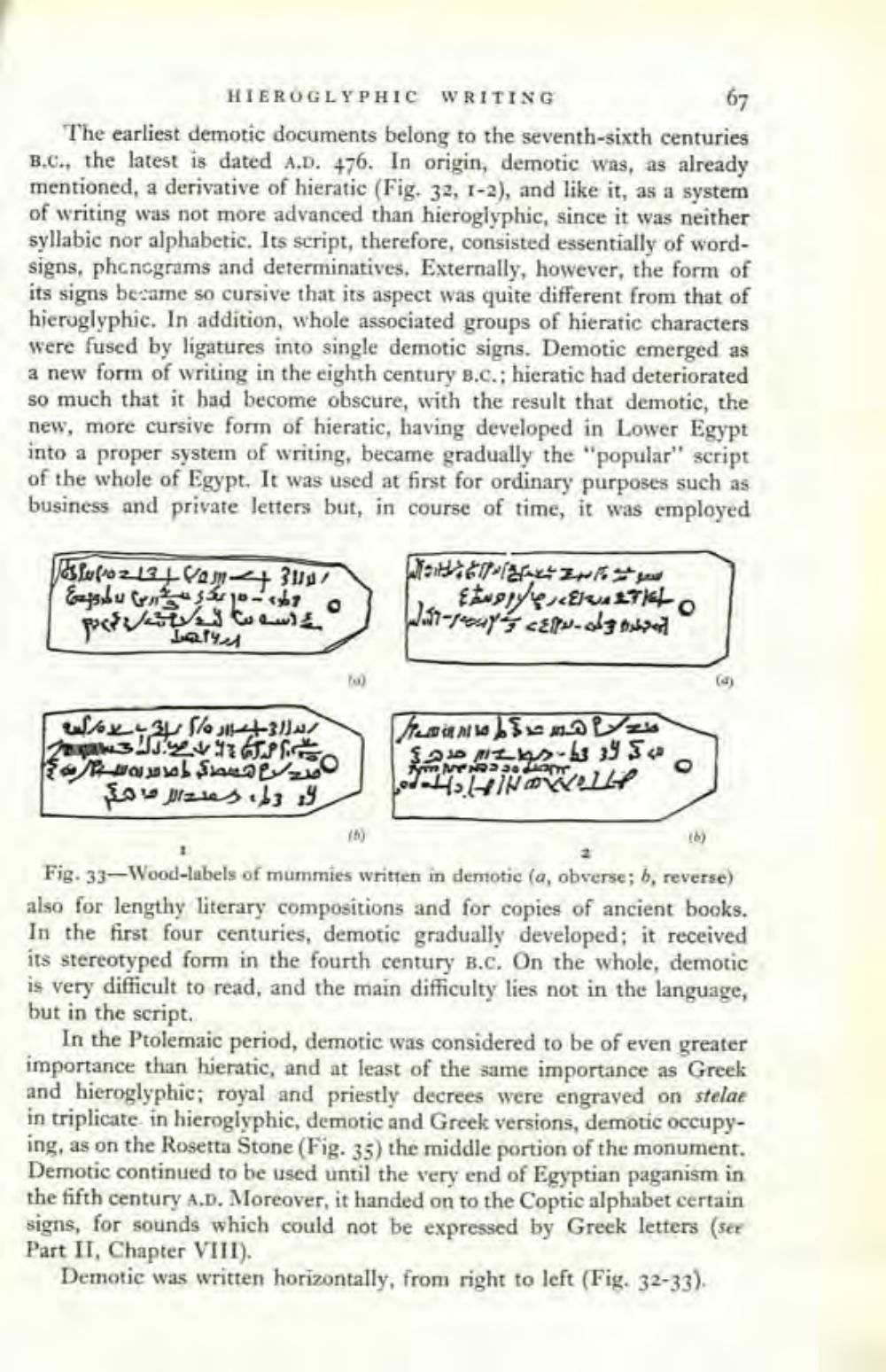________________
HIEROGLYPHIC WRITING
The earliest demotic documents belong to the seventh-sixth centuries B.C., the latest is dated A.D. 476. In origin, demotic was, as already mentioned, a derivative of hieratic (Fig. 32, 1-2), and like it, as a system of writing was not more advanced than hieroglyphic, since it was neither syllabic nor alphabetic. Its script, therefore, consisted essentially of wordsigns, phonograms and determinatives. Externally, however, the form of its signs became so cursive that its aspect was quite different from that of hieroglyphie. In addition, whole associated groups of hieratic characters were fused by ligatures into single demotic signs, Demotic emerged as a new form of writing in the eighth century B.C.; hieratic had deteriorated so much that it had become obscure, with the result that demotic, the new, more cursive form of hieratic, having developed in Lower Egypt into a proper system of writing, became gradually the "popular" script of the whole of Egypt. It was used at first for ordinary purposes such as business and private letters but, in course of time, it was employed
Varuko213 . Van 24 30/ Ebu Crno <31 .
3
Misi Zrtowe
Etugly/Elv£TILO W.57-1-cny celf-oda mubad
۳ |
سه با لین
/
3 الاطلس |
بدرالمرور ي
Freea ni va bu malla Tabs-53345
Rua Senzo
در ژله، مهال وام
18)
Fig. 33-Wood-labels of mummies written in derrotic (a, obverse; b, reverse) also for lengthy literary compositions and for copies of ancient books. In the first four centuries, demotic gradually developed; it received its stereotyped form in the fourth century B.C. On the whole, demotic is very difficult to read, and the main difficulty lies not in the language, but in the script,
In the Ptolemaic period, demotic was considered to be of even greater importance than hieratic, and at least of the same importance as Greek and hieroglyphic; royal and priestly decrees were engraved on stelae in triplicate in hieroglyphic, demotic and Greek versions, demotic occupying, as on the Rosetta Stone (Fig. 35) the middle portion of the monument. Demotic continued to be used until the very end of Egyptian paganism in the fifth century A.D. Moreover, it handed on to the Coptic alphabet certain signs, for sounds which could not be expressed by Greek letters (ser Part II, Chapter VIII).
Demotie was written horizontally, from right to left (Fig. 32-33).




